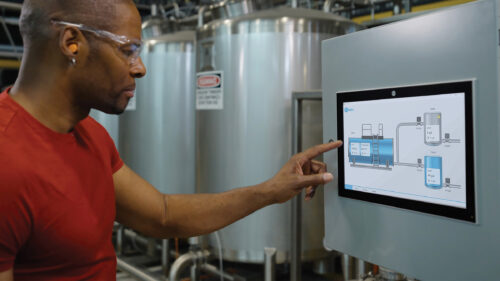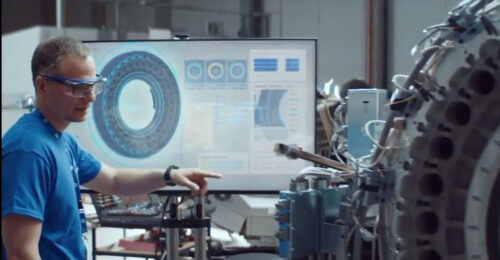Behind the new touch screens
Touchscreens are increasingly finding their way into industrial environments as manufacturers, upgrading their human machine interfaces (HMIs) to better accommodate humans, find this technology is making the task easier than ever. IMS Research predicts increased adoption of new operator interfaces by machine builders in the worldwide food, beverage, and tobacco industries.
| Elo TouchSystems’ goals is to make its new touchscreens look less like computer monitors and more like a design element. |
Touchscreens are increasingly finding their way into industrial environments as manufacturers, upgrading their human machine interfaces (HMIs) to better accommodate humans, find this technology is making the task easier than ever.
IMS Research predicts increased adoption of new operator interfaces by machine builders in the worldwide food, beverage, and tobacco industries.
The company reports these sectors will increase their use of operator interfaces by more than 125,000 units between 2007 and 2012 and “one factor driving this growth is the increasing use of highly ruggedized touch screen operator terminals, which can be washed down. These products are able to store, analyze and distribute large amounts of data, crucial in a sector where traceability is often required by law.”
Gunze USA recently showcased three new optical films for operator interfaces:
-
The EMI shielding film has 0.5 ohms/sq surface resistance and 80% optical transmissivity.
-
The heat-resistant film remains stable in temperatures up to 180 °C.
-
The highly-durable (HD) film can be made with pencil hardness values from 3-9 H. It has 91% light transmissivity and it exhibits thermal stability above 85 °C.
Tyco Electronics’ Elo TouchSystems has introduced what it says is the first zero-bezel wide-aspect ratio touch monitors with a 100% usable surface area.
Such high-end design does not mean flimsy technology, however. The 1900L and 2200L touch monitors are reportedly designed for use in high-traffic retail, hospitality, and other public environments, and their durability makes them appropriate for industrial control room use. The monitors also incorporate Elo TouchSystems acoustic pulse recognition (APR) touch technology or IntelliTouch surface acoustic wave technology.
APR technology works by recognizing the sound created when the monitor’s surface is touched. This means users can interact with the touch screens with virtually any kind of stylus—from a fingertip to the edge of a credit card.
Do you have experience and expertise with the topics mentioned in this content? You should consider contributing to our CFE Media editorial team and getting the recognition you and your company deserve. Click here to start this process.





